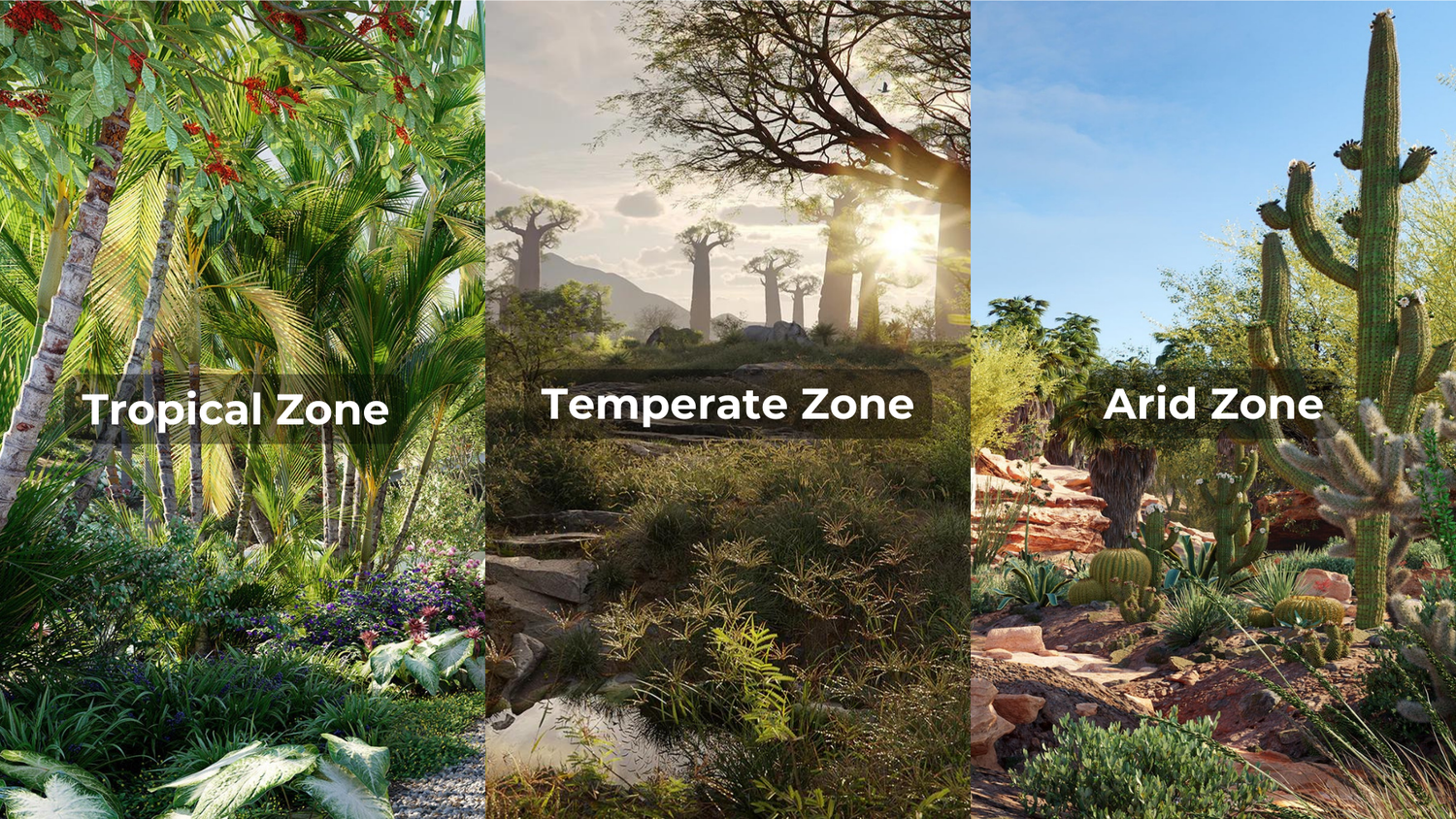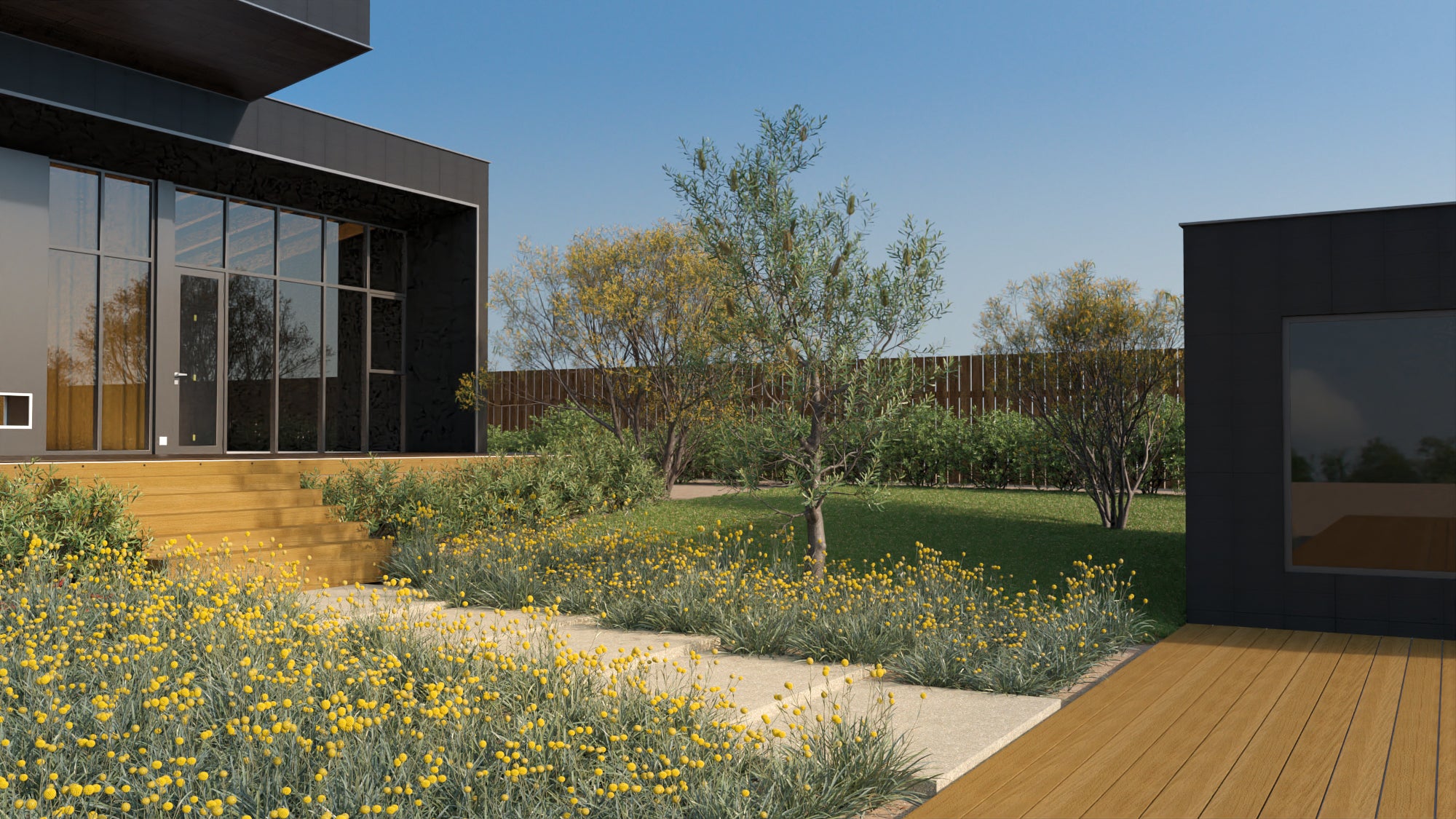In landscape design and architectural visualization, the ability to customize 3D plant models for different climate zones is crucial to create realistic, contextually appropriate environments. Whether you're working on a tropical resort, a temperate urban park, or a desert oasis, adapting your plant models to reflect the local climate can enhance both the visual appeal and accuracy of your project.
This article will guide you through the process of customizing 3D plant models for different climate zones, focusing on selecting the right plants, modifying textures, and using 3D modeling techniques to simulate seasonal variations. Let's dive into how to create stunning, climate-appropriate landscapes using 3D plant models!
1. Choose Regionally Appropriate 3D Plant Models
The first and most essential step in customizing 3D plant models for climate-specific projects is selecting plants that are native or well-suited to the area you're designing. Globe Plants, for instance, offers specialized bundles like Australian Native Plants, African Plants, and New Zealand Native Plants, which provide region-specific species ideal for various environments.
Here are some examples of plant types suited for different climate zones:
Tropical Zones
Use models like palm trees (e.g., Phoenix Dactylifera), banana plants, and lush tropical ferns. These plants thrive in high humidity and warm temperatures, making them perfect for tropical resorts or jungle scenes.

Temperate Zones
Choose models like Magnolia Grandiflora and Cupressus Sempervirens for areas that experience four distinct seasons. These plants offer a blend of evergreen and deciduous species, perfect for urban parks or suburban gardens.

Arid and Desert Zones
For desert environments, use drought-resistant plants like cacti, succulents, and Eucalyptus trees. These species have evolved to survive extreme heat and limited water, making them essential for desert landscapes or Mediterranean settings.

Tip: Start by researching the local flora of the project location to ensure you are selecting region-appropriate species. Globe Plants' regional bundles make this process easier by providing curated collections of plants for specific climate zones.
2. Modify Plant Textures to Reflect Local Conditions
Once you've selected the right 3D plant models for your climate zone, the next step is to modify their textures to better suit the environmental conditions. This can involve adjusting the color, material properties, and even the overall look of the foliage and bark to reflect the local climate.
Tropical Zones
- Vibrant, Saturated Colors: In tropical environments, plants typically have rich green foliage due to the abundance of sunlight and moisture. Adjust the texture colors to make the leaves appear more saturated and glossy, reflecting the humidity.
- Wet Materials: Consider adding slight glossiness or wet effects to plants, especially after rain. Use reflective materials for the leaves to capture that lush, tropical feel.

Temperate Zones
Seasonal Variation: In temperate zones, plants undergo changes throughout the seasons. Use different textures for spring, summer, autumn, and winter. For instance:- Spring: Fresh, bright green foliage.
- Summer: Fuller, deep green textures.
- Autumn: Warm hues like orange, red, and yellow for deciduous trees.
- Winter: Bare branches or subtle frosty textures for some species.

Arid and Desert Zones:
- Dull and Dusty: Plants in desert climates often have muted colors, such as dusty greens, browns, or grays, to reflect the harsh, dry environment. Adjust the texture saturation to give the plants a more weathered appearance.
- Dry, Rough Materials: Desert plants like succulents or cacti have thick, dry surfaces. Apply textures with a matte finish to simulate the arid conditions.

Tip: Always use high-resolution textures for close-up shots, but consider using lower-resolution versions for background plants to optimize performance.
3. Simulate Seasonal and Climate Changes with 3D Modeling Techniques
Beyond textures, you can use 3D modeling techniques to reflect the natural seasonal and climate changes in different zones. By tweaking the shape and structure of your plant models, you can create more dynamic and realistic representations for your project.
Seasonal Customization
- Leaf Fall in Autumn: For temperate environments, simulate the natural shedding of leaves in the fall by either removing some of the leaves from your tree models or adding a layer of scattered leaves on the ground.
- Snow in Winter: For winter scenes, especially in cold, temperate zones, apply a light layer of snow or frost to your plant models. This can be achieved by adding a white or translucent texture overlay on top of the leaves and branches.
- Flower Blooming in Spring: For spring scenes, adjust your models to include flowers or new growth. Add vibrant, colorful blossoms to species like magnolias or cherry trees.
Climate-Specific Customization
-
Wind Simulation: For windy coastal or desert regions, simulate plants swaying or bending due to wind. Use deformers or rigging techniques in your 3D software to animate the movement of the plant models.
-
Drought Stress in Arid Zones: In extremely dry environments, plants may appear smaller, more shriveled, or have fewer leaves. Consider scaling down certain elements or adjusting the leaf density to reflect a plant struggling with water scarcity.
Tip: Many 3D rendering engines, like Unreal Engine or Blender, offer tools to animate environmental factors like wind and weather. Using these tools to simulate real-world conditions can dramatically enhance the realism of your projects.
4. Optimize Your 3D Plant Models for Performance
Lastly, when working with large-scale environments or climate-diverse projects, it's important to optimize your 3D plant models to maintain performance, especially for real-time applications such as VR or gaming.
- Use LOD (Level of Detail) Models: Many 3D software programs allow you to create multiple versions of a plant model with varying levels of detail. Use high-poly models for close-ups and low-poly versions for background plants to improve performance. For more detailed insights into when to use high-poly versus low-poly models in your projects, check out our article on High Poly vs Low Poly Models: Which is Best for Your Project. This article will help you decide which model type to use, ensuring optimal performance and visual quality in your designs.
- Texture Atlasing: Combine multiple textures into a single atlas to reduce the number of texture files being loaded, which can speed up rendering times.
- Instancing: If your project requires a large number of the same plant model (e.g., a forest or field), use instancing techniques to duplicate models without increasing memory usage.
Conclusion
Customizing 3D plant models for different climate zones in your projects can greatly enhance the realism and visual appeal of your landscape designs. By selecting the right species, adjusting textures for local conditions, and using advanced 3D modeling techniques to simulate seasonal changes, you can create immersive environments that reflect the natural diversity of our world.
Whether you're working on tropical paradises, temperate parks, or arid desertscapes, Globe Plants offers a vast library of 3D plant models that you can easily customize for any climate. Start exploring their collections today and take your landscape designs to the next level!



